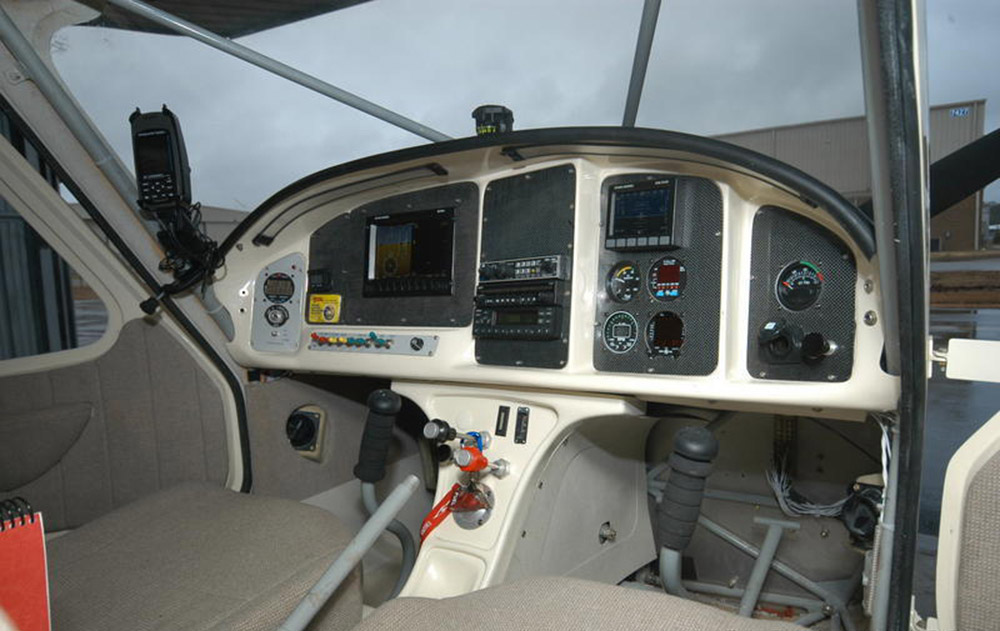Flap handle detent notches: Trial-fit flap detent notches in the flap actuator lever between the seats prior to chroming. I had to widen my aft-most notch about 10 thousandths to maintain the detent position.
–Jim Londo
Seat belt mounting: Mount seat belts exterior of center attach points to avoid interference with flap actuator handle.
–Jim Londo
Hint for IX Systems Installation: Step 29, (p. 118): Pressing Bushings into the Fuselage Wing Strut Attach Lug. This idea can be used for pressing other bushings as well, but is particularly useful here due to the limited space involved and you cant put the fuselage in a vise!) As soon as you have the bushing positioned (with a little Loctite or similar) and started in, insert a hardware store quality 7/16 x 1.5″ bolt (with washer under the nut) through the bushing and the lug and simply tighten the nut!! This eliminates hammering or other techniques which might damage the lug or bushing and maintains directional alignment for the bushing as it is going in.
–Paul Hansen
Landing Lights: I’ve been following the landing light issue. I am taking a tip from a friend who built a beautiful Lancair IVP, who used a light from the local Walmart. It is a small bullet shaped light with a bubble lens in the tip. It is called “The Ultimate Driving Light” No. C8004K. It is made by Blazer International Corp, 2960 Hart Drive, Franklin Park, IL 60131. It is an automobile driving light with a 50 watt Halogen bulb in it., and comes with wiring, fuses, switch (if you want it), etc. (I just used my panel switch) And it only costs about $40. It weighs only 7 oz or so. I am installing mine on a little platform I made of fiberglass in the cowl (as my friend did). But I just went and measured it and tried it and with some adaptation you could mount it right in the SH existing wing tip fairing quite easily with just the lens protruding through a small hole from the front of the fairing. It could be sealed in with RTV and held in place with a bit of fiberglass, and you would not even need a separate plexiglass lens installed. Thus it would be easy to put one in each wing tip without any compromise of the wing. You would have to remove the tip fairing to get at the light to change the bulb, but that would not be too much of a problem, no more often that it would be needed.
–Paul Hansen
Instrument panel hints: My wife is not as tall as some of us and therefore has more difficulty in seeing out of some light aircraft. She really likes the visibility in the GlaStar due in part to the low cut windows. I encourage builders to sit in the cabin with their eyes and hands/feet in the normal flight position (as high as practical without having to dip your head to see sideways out the window) and observe what you can reach and see.
Notice the lower windshield corners give excellent visibility to an aircraft coming up underneath you. Why are you now covering up that area with the high corners on your instrument panel? Since the right side is the most difficult area for a left seat pilot to see, why not cut down the corners and have a panel that dosen’t block your view unnecesarily?
The prototype has a center panel below the instrument panel. For a long time now we recognised it unnecessarly blocked access to below the instrument panel, created “pain” points on our legs for taller folk, made it more difficult for ingress/egress, etc.
Since the fuel on/off valve will be on the tunnel, be sure and install it where you can reach it in normal flight position. In fact check everything you are installing that requires your sight or touch. If you have to remove your shoulder harness to reach something then you might want to rethink it’s location. (airvents, switches, valves, etc.)
Be sure and install a deflector so the hot air for the defog on the inside of the windshield dosen’t hit directly on the plastic. The prototype’s windshield started crazing around 300 hours at that location and at a 1,000 hours is badly crazed.
Do have a defogging system. Nothing is so bad as trying to see your way along in damp, moist weather and then realize that much of the poor visibility is on the inside of your windshield. (A handkerchief, quickly used, helped me save my airplane one time.)
–Tim Johnson




